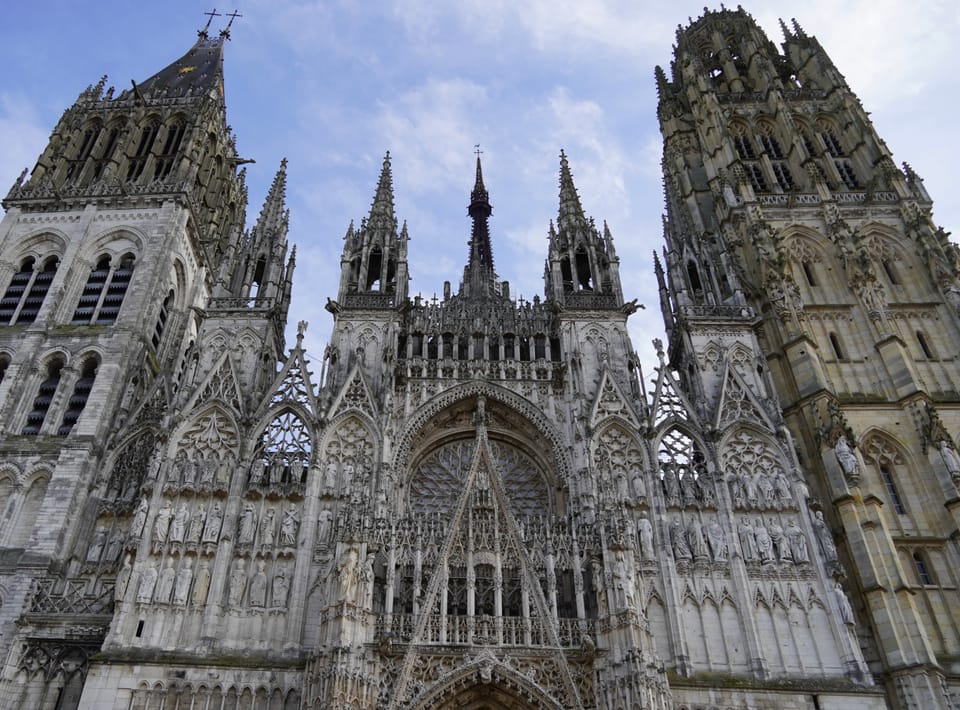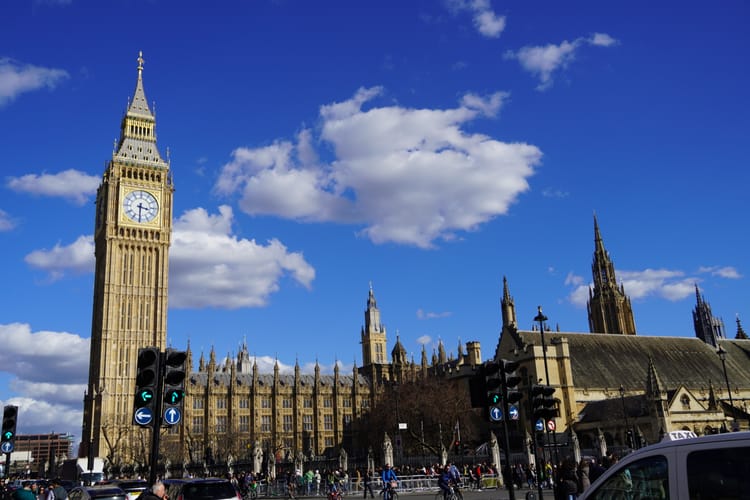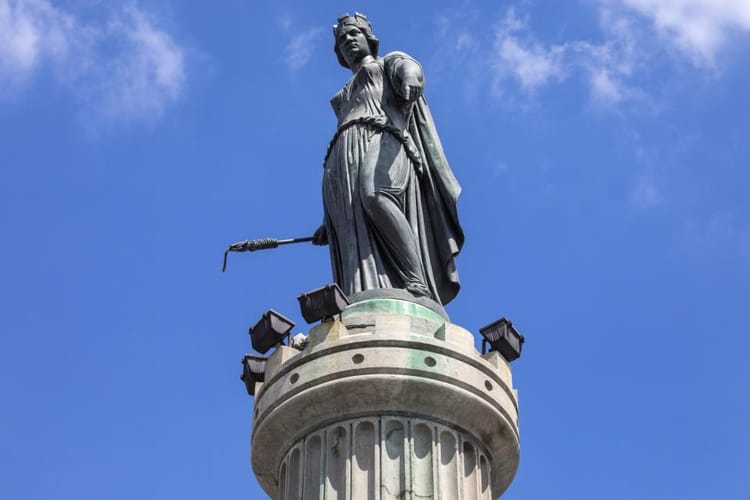Rouen

Welcome to Rouen, the cultural and historic capital of Normandy! Rouen is situated about 125 km (75 miles) from Paris, is easily accessible via approximately an hour and a half train (or two hour drive), and has a population of about 120,000 people.
Despite receiving it's official city charter in 1050, Rouen, like many historic French cities, was initially settled by Gaulish tribes before being formally founded by the Romans in the first century BC. Due to its desirable geographic location and abundant natural resources, Rouen has found itself at the center of centuries of bloody wars, most notably the Hundred Years War waged between the English and French. The inevitable shifts in power that resulted from these conflicts meant that Rouen has at one time (or sometimes several) or another been under the control of Vikings (9th and 10th centuries), Normans, English, Prussians, and Germans. Unfortunately, prolonged bombings, gunfire, and outbreaks of fire throughout World War I destroyed nearly half of the buildings within Rouen, but thankfully its stunning cathedrals were largely left intact.
Rouen has a long history of art, cooking, science and artisanship, and we had a lot of fun taking in its highlights. Read on for more of what we got up to during our first trip to Rouen!







Jeanne-d'Arc, la Pucelle (Joan of Arc, the Virgin)
In addition to its stunning gothic cathedrals, Gros Horloge (big ol' clock), and museums dedicated to art, science, and history (many of which are free!), Rouen is perhaps best known for being the city in which Jeanne-d'Arc was tried, convicted, and ultimately burned at the stake for heresy on the 30th of May, 1431. Jeanne has a mythology surrounding her that can make it a bit difficult to sort fact from fiction, but I've tried to combine information from several sources in order to keep the story as close to the agreed upon reality as possible.
Jeanne was born into an unremarkable peasant farming family in 1412, and raised in the church as was customary for the time. Early in her life, she claimed to experience frequent visions in which the archangel Saint Michael would provide her with divine guidance. Somewhat prophetically, she claimed that her visions would also include guidance from the virgin saints Catherine of Alexandria and Margaret of Antioch, who were themselves martyred after being tortured and burned at the stake by their enemies. Jeanne soon took a vow of extreme piety, and led her life in direct accordance of the guidance given to her during her visions.
During to the Hundred Years War, the status of the crown of France became uncertain due to the death of Charles VI. Ownership claims were both made by Charles VII (heir to the crown) for France, and Henry VI (current occupier of Northern France) for England, and five years after Charles VI death there was still no formal ruler crowned in Reims. Led by visions, Jeanne sought an audience with Charles in which she informed him of her commands to defeat and expel the English so that Charles may be crowned king in Reims as intended. Charles had her questioned by various church authorities to determine the legitimacy of her claims and allegiance, and it was eventually agreed that she be allowed to enter the battle of Orléans. Jeanne's successful efforts to liberate the forts surrounding Orléans helped her to quickly gain notoriety as a fearsome commander, and her presence on the battlefield immediately gave French soldiers more confidence.
With Orléans now liberated, Jeanne insisted that it was time for Charles VII of France be coronated as king. Collaborating with French commanders in several battles within the Loire, Jeanne aided in the decimation of English forces between Orléans and Reims, and they were eventually able to enter the city unopposed, and Charles was thus crowned.
Her first goal achieved, Jeanne decided to continue with her efforts to liberate France from the English occupiers. Despite finding additional successes in batte, Jeanne eventually started to fall out of favor in the court after ultimately failing in her attempts to siege the much more heavily fortified walls of Paris, and the Burgundian occupied Perrinet Gressart. Scholars and church officials were beginning to doubt her claims to divine guidance, and after Charles VII signed a truce with the Burgundians, his the army was thus disbanded and Jeanne's leadership in battle no longer needed.
It is at the Siege of Compiègne where the end of Jeanne's story begins. Despite being ceded to the Burgundians by Charles VII, Compiègne had not formally submitted itself to their rule, and was thus being threatened by the Duke who wanted to reclaim its ownership. Even though she had not been given any formal support from the king, the threats from these English allied Burgundians did not sit well with Jeanne, so she decided to bring a force to the city's aid and bolster its resistance efforts. However, while at battle in a camp northeast of town, her plan of attack quickly failed and she was subsequently captured and handed over to the English.
The results of Jeanne's trial are now known to be an unfortunately foregone conclusion. Despite religious claims made by the English, it is clear that the trial's main goal was not only to remove a military opponent, but to more importantly delegitimize the supposedly divinely guided crowning of Charles VII. Jeanne initially faced seventy charges, focused primarily on her blasphemous claims of divine guidance, ability to make prophesies, and claims of salvation, and secular charges such as (gasp!) her tendency to wear men's clothing. While many of these charges were removed, twelve still remained, and after the approval of these charges by jurors from the University of Paris, she was able to be publicly condemned. The charges were brought before her, and despite denying their claims, she was eventually forced to sign an abjuration document in which she renounced her oaths. Following the signing, she was placed back in prison, forced to change into women's clothes, had her head shaved, lead to Rouen's Vieux-Marché (Old Marketplace) for her charges to be read publicly, and subsequently burned at the stake.
Whether or not the events that took place over her short life have been exaggerated over time, Jeanne undoubtedly belongs alongside the most important figures in French history. She is one of the most studied people of her time, and is remembered today as a defender and savior of France, one who has even been canonized as a virgin saint in the Roman Catholic Church. Jeanne continues to be a feminist inspiration, a symbol of courage and perseverance, and the subject of numerous movies, tv shows, plays, books, and works of art. For nearly 600 years, the city of Orléans has continued to host an annual Fêtes de Jeanne d'Arc (Joan of Arc Festival) in which they elect a new "Jeanne d'Arc" to carry on her legacy.
My cobbled together summary of Jeanne's life really only scratches the surface, I doubt I did it justice. There is a wealth of information out there, including the following sites. If learning more about her story interests you, I would encourage you to do so! Below the links are also some photos from our visit to her gorgeous memorial church, and a couple of photos from the interactive museum we visited which followed her life.












interior of "St Joan of Arc's Church" (sorry for the vertical video)
Les Cathédrales
Despite its relatively small geographic size, Rouen is home to many incredible churches, cathedrals, abbeys and everything in between (I'm still trying to learn which is which). There are so many churches scattered around the city that it was given nicknames such as "city of one hundred bell towers" and "city of one hundred spires!"
Cathédrale Notre-Dame de Rouen / Rouen Cathedral
There are few better examples of the progression of gothic art and architecture than the Rouen Cathedral. Work on it was started in the 12th century, and it was enlarged, improved, and renovated over the following 800 years! The outside of the cathedral boasts two tremendous spires (one of which is 151 m/495 ft tall), three uniquely styled towers, a facade absolutely covered in sculptures of saints, apostles, angels, and other iconography. Meanwhile, the interior shows off beautiful ribbed rib vaults (see photos below), a stunning series of stained glass windows dating from the 13th-16th centuries, as well as the tombs of Rollo (the Viking Duke of Normandy) and Richard the Lion-Hearted (another Duke of Normandy and eventual King of England). From 1876 - 1880, the cathedral was even designated as the tallest building in the world.
Rouen cathedral was made even more famous thanks to a series of 28 paintings made by Claude Monet (see photos below from our visit to the Musée des Beaux Arts), which inspired other artists to do the same. These paintings can be found all over the world, from the Musée des Beaux Arts in Rouen, to the Musée D'Orsay in Paris, the Getty Center in Los Angeles, the National Museum in Serbia, and many more.









St. Maclou Catholic Church and Saint-Ouen Abbey Church
Unfortunately both of these churches were closed when we attempted to visit, but they still had beautiful facades and grounds. I especially liked the grounds surrounding the abbey, it seemed like a lovely place to have a picnic or relax with a book when the weather gets nicer. While trying to find a way inside, we also briefly chatted in broken French with an older gentleman who was trying to get in, and before we left gave my a CD that he recorded years ago of him playing trumpet and his wife playing the organ at the abbey. It was a very nice gesture, but unfortunately I don't even have a CD player so i'll have to find a way to get the songs converted digitally!




photos 1-2 of Saint Maclou, 3-4 of the Saint Ouen Abbey
Les Musées
Our first museum visit in Rouen was at the Musée des Beaux-Arts de Rouen (Rouen Museum of Fine Arts). The museum was originally established in the late 18th century by Napoléon Bonaparte, and its collection grew substantially over the next century before it finally reach a large enough size in the late 19th century to necessitate the construction of the complex in which it is housed today. The museum houses the largest impressionist art collection of any museum outside of Paris, the includes art from disciplines such as painting, sculpture, and drawing, and masterpieces from such artists as Monet, Rubens, Degas, and Caravaggio (among many others). The quality of museums through France continue to impress me, and the fact that such a collection is offered for free makes it even more incredible. I particularly enjoyed the larger paintings (like the one that Emily is standing in front of in the photo below), and the paintings taken from Monet's series of the Rouen cathedral.









We also visited the Musée Le Secq des Tournelles, a museum devoted to the art of wrought ironwork. The museum houses over eight thousand pieces of iron work dating from Gallo-Roman times through the 20th century, and includes pieces of furniture, weaponry, scientific instrumentation, and jewelry sourced from across Europe, the Middle East, and Asia. In my opinion, the most impressive pieces were from the collection of locks and keys, the level of craftsmanship and detail was conducted at a level that I didn't even realize was possible for the time.









Aitre Saint Maclou



While wandering around Rouen, we also came across Aitre Saint Maclou in the city center. The site was originally created in the 14th century to facilitate the mass burial of those who died from the black death, and effectively served as an ossuary (basically a boneyard) which for these victims. Following the occurrence of yet another plague in the 16th century, there was sadly enough of a demand that the site was increased in size to its present dimensions of 32 x 48 meters (100 ft x 150 ft). Decorated around the square are carvings of "macabre motifs" such as skulls, tibias, and shoulder blades, as well as grave diggers tools, coffins, and surgical instruments. Despite its depressing past, today the square is also home to an art gallery, cafe, pastry shop, and theater.
Overall, Rouen was a great introduction to Normandy. It's close to Paris, reasonably priced as a tourist destination, home to beautiful museums and architecture, and had plenty of delicious food and drink options to discover. Similar to Lille, I find myself wanting to come back during better weather to soak up the warmer temps, but even in the rain we had a great time. On our next visit we intend to check the ceramics museum, Flaubert's museum of the history of medicine, and perhaps the museum of natural history as well.
Thanks for reading!
Parker







Member discussion